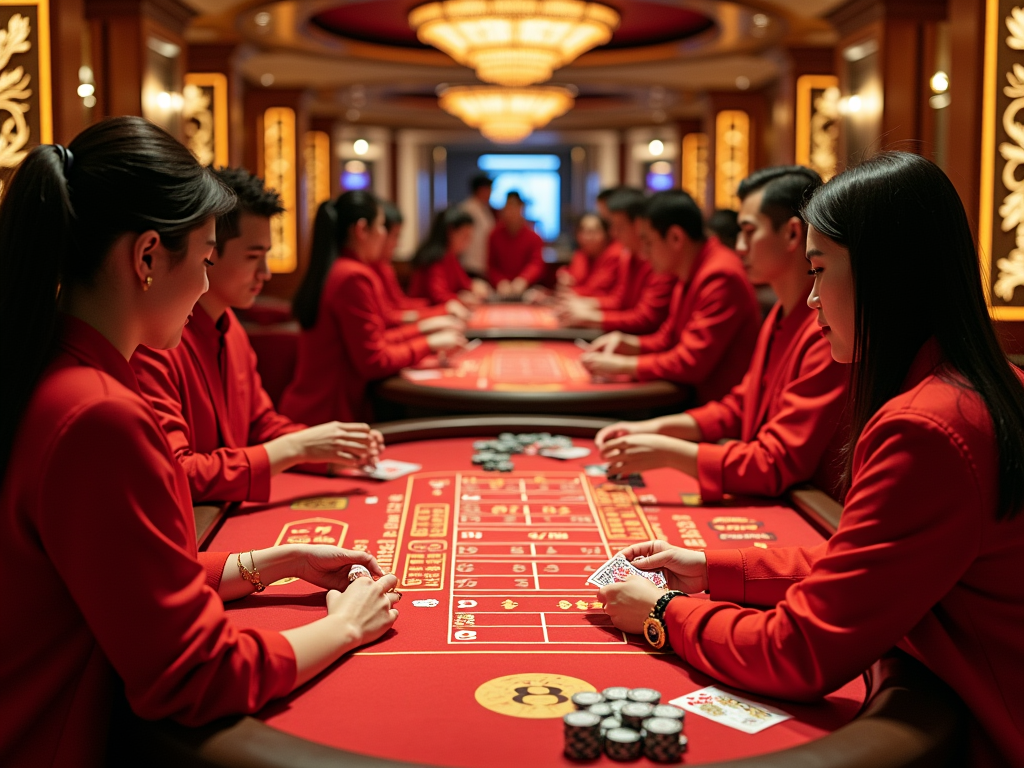The Cultural Influence of Baccarat in Asian Casinos
Baccarat accounts for up to 90% of table game revenue in major Asian markets like Macau, driven by cultural beliefs, superstitions, and gaming preferences. The game’s appeal stems from Asian perspectives on luck, fortune, and destiny, evident in player rituals and betting patterns.
Key Takeaways
- Numbers function as key influencers in Asian baccarat, where 8 signifies wealth and prosperity, while players avoid 4 due to its death associations.
- Card squeezing (看牌) creates dramatic moments in Asian baccarat, transforming each card reveal into a theatrical display.
- Red and gold casino decor symbolizes good fortune and wealth in Asian tradition.
- High-stakes baccarat links directly to social status (面子), with exclusive rooms serving players who bet hundreds of thousands per hand.
- Tracking systems and lucky symbols remain central to Asian baccarat culture, persisting through modern casino innovations.
The culture surrounding Asian baccarat creates a unique gaming environment that blends traditional beliefs with contemporary casino operations. Players incorporate personal rituals, number preferences, and cultural customs into their gaming strategies. Private gaming areas cater to high-rollers seeking both status recognition and personalized service.
These cultural elements shape everything from table layouts to dealer procedures. Casino operators adapt their offerings to match these preferences, creating spaces that respect and celebrate Asian gaming traditions while delivering modern gaming experiences.
Why Baccarat Dominates Asian Gambling Like No Other Game
The Revenue Giant of Asian Casinos
I’ve seen firsthand how Baccarat has become the undisputed king of Asian casino gaming. The numbers tell a compelling story – Baccarat generates an astounding 85-90% of all table game revenue in Macau’s casinos. This dominance isn’t just impressive; it’s transformative for the entire Asian gaming market.
Punto Banco, the most popular Baccarat variant in Asia, has carved out an unshakeable position on casino floors across the continent. Its straightforward nature, where players simply bet on either the ‘Player‘ or ‘Banker‘ hand, perfectly matches the fast-paced energy of Asian gaming culture.
Cultural Connection and Player Demographics
The game’s success stems from its deep connection to Asian cultural values and beliefs about luck and destiny. Instead of demanding complex strategic decisions, Baccarat lets players put their faith in fortune – a concept deeply embedded in Asian philosophy and daily life.
The player base splits into two distinct categories, each contributing significantly to the game’s revenue:
- VIP players: High-rollers who prefer private gaming rooms and place substantial bets
- Mass-market players: Regular customers who enjoy the social atmosphere and lower minimum bets
This split showcases how Baccarat adapts to different player preferences while maintaining its core appeal. The contrast between Asian and Western markets couldn’t be clearer – while Las Vegas offers a diverse mix of games, Asian casinos focus heavily on Baccarat, reflecting regional preferences and cultural alignment.
The consistent growth in Macau’s gross gaming revenue (GGR) demonstrates this preference isn’t just a trend – it’s a fundamental aspect of Asian gaming culture. The revenue generated by Baccarat in Macau consistently surpasses that of the entire Las Vegas Strip, proving its powerful hold on Asian gamblers.
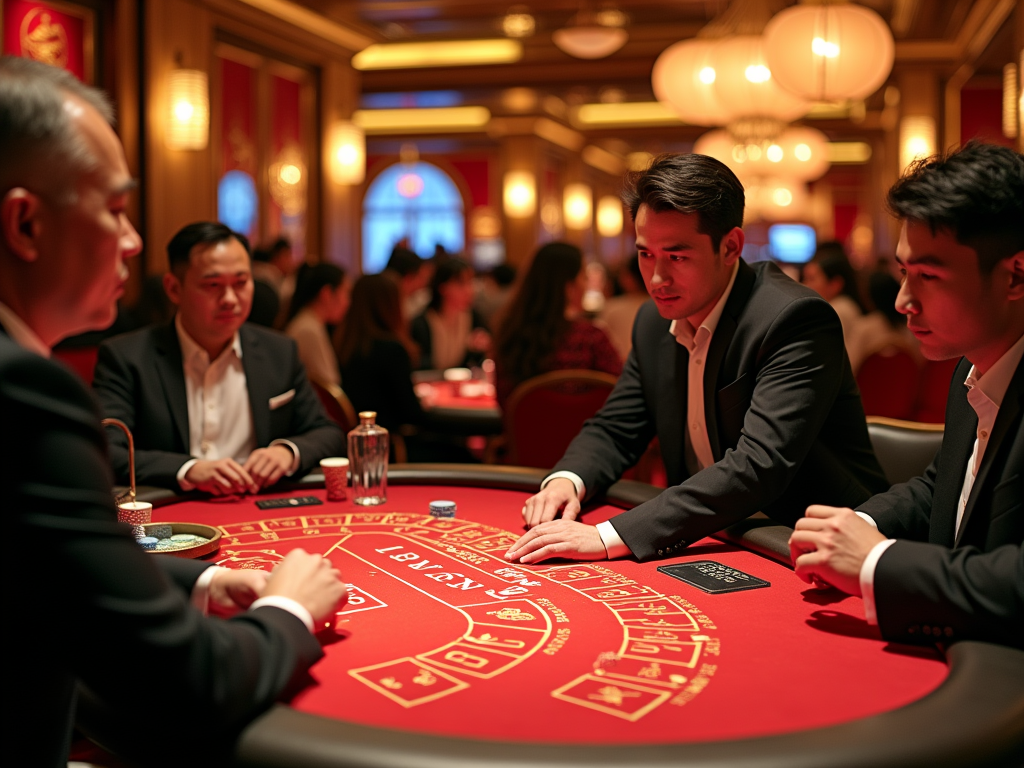
Lucky Numbers That Can Make or Break a Gaming Session
The Power of Numbers in Asian Gaming Culture
I’ve noticed how deeply numbers can affect a baccarat player’s mindset in Asian casinos. The number 4 carries such strong negative associations that many Asian players will flat-out refuse to sit at table 4 or place bets adding up to this unlucky digit. This stems from the striking similarity between the pronunciation of “four” (四, sì/sei) and “death” (死, sǐ/sei) in several Asian languages.
Strategic Table Selection and Casino Design
On the flip side, the number 8 holds incredible appeal. Its pronunciation (八, bā/baat) sounds similar to the word for prosperity and wealth (發, fā/faat), making it a hot commodity on the casino floor. I’ve seen players queue for extended periods just to secure a spot at table 8 or any table number containing an 8.
These cultural beliefs shape casino operations in fascinating ways. Here’s how casinos adapt their layouts to accommodate these preferences:
- Tables are often numbered to skip 4, jumping from 3 directly to 5
- VIP rooms frequently feature number 8 or combinations including 8
- Premium gaming areas are placed on the 8th floor when possible
- Table layouts might cluster “lucky” numbered tables together
The impact of these number-based beliefs runs deeper than similar superstitions in Western gaming culture. While Western players might avoid the number 13, Asian players’ numerical preferences actively drive their gaming decisions — from choosing betting amounts to selecting specific seats at the table. I’ve watched players carefully calculate their bet totals to avoid any connection to the number 4 while deliberately incorporating 8s into their wagering patterns.
These numerical preferences show how cultural beliefs can transform simple digits into powerful symbols of fortune or misfortune in the gaming environment. Smart casino operators understand and respect these cultural nuances, creating spaces where players feel comfortable and confident in their gaming experience.
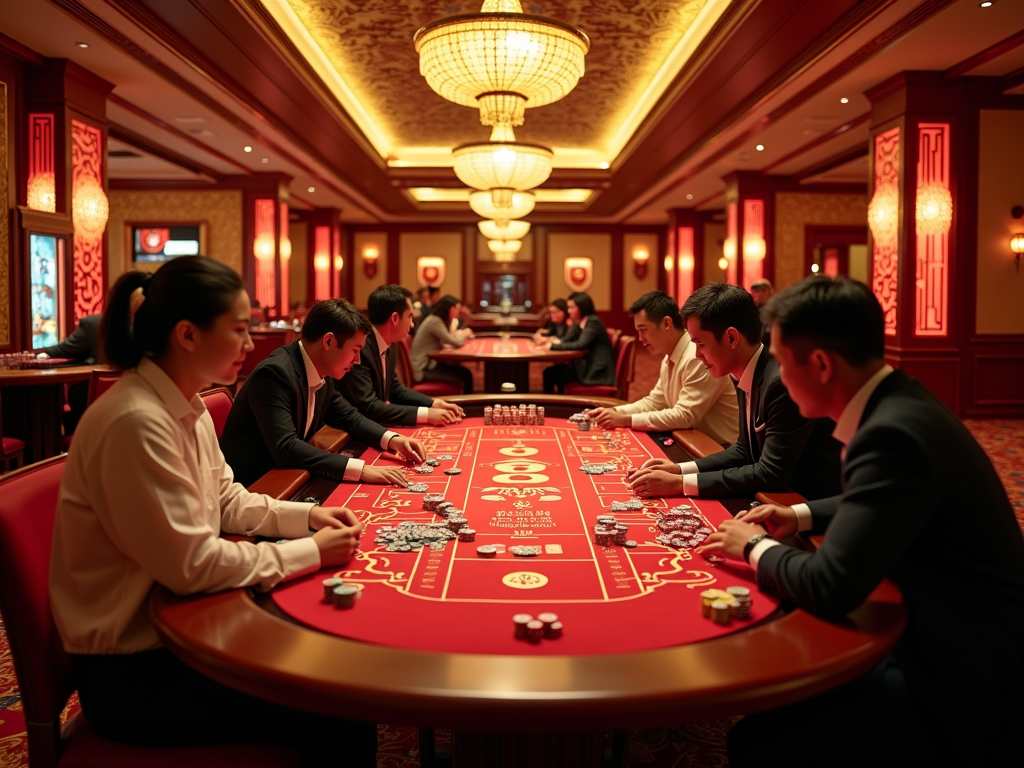
The Art of Card Squeezing and Other Fortune-Drawing Rituals
Card squeezing stands as one of the most distinctive features of Asian baccarat culture. Known as 看牌 (kàn pái) or 揸牌 (zhā pái) in Chinese, this ritualistic practice transforms each card reveal into a dramatic performance. Players methodically peel back card corners, creating a tension-filled moment that can last several minutes as they search for glimpses of their fortune.
Traditional Card Squeezing Techniques
The technique requires a delicate touch and careful attention. Players typically start by lifting the short edge of the card, gradually revealing just enough to spot the crucial number or symbol. Experienced players often incorporate specific movements:
- Gentle corner bends to prevent card damage
- Slow, calculated peeling motions from both sides
- Strategic pauses to build anticipation
- Careful card rotation to view from multiple angles
Supplementary Fortune-Drawing Practices
Beyond card squeezing, Asian baccarat tables buzz with various luck-drawing rituals. Players commonly blow on cards before they’re revealed, believing this action can influence the outcome in their favor. Table tapping has become another widespread practice, with players creating rhythmic patterns they believe channel good fortune.
The visual tracking system, known as the “roads,” plays a central role in Asian baccarat strategy. Players religiously follow these pattern-tracking methods:
- Big Road – The primary record of game results
- Big Eye Road – A derivative pattern focused on specific trends
- Small Road – A modified version of pattern tracking
- Cockroach Road – The most intricate pattern-following system
These tracking methods have evolved into essential tools for players who believe in pattern recognition, though they don’t actually affect the game’s random outcomes. High-stakes players historically demonstrated their frustration with losing hands by tearing cards — a practice that’s now largely discontinued in modern casinos.
Special phrases and verbal rituals add another layer to the experience. Players often call out specific numbers or traditional expressions believed to summon good luck, creating an atmosphere charged with superstitious energy at the gaming table.
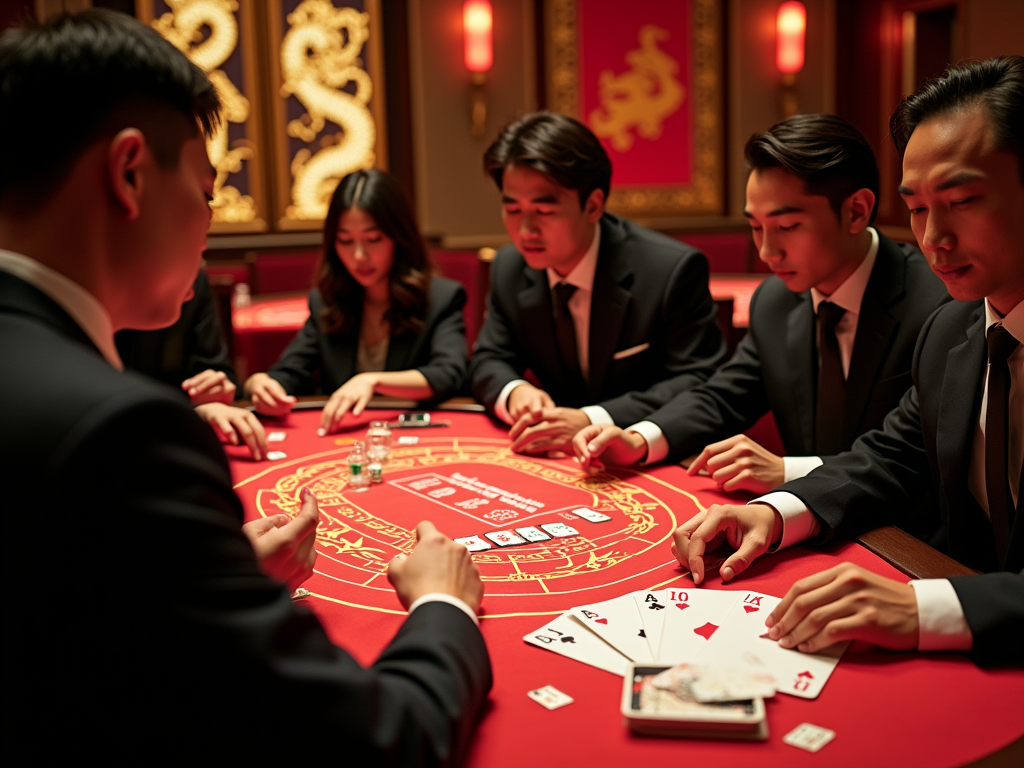
Colors and Symbols That Attract Good Fortune
Lucky Colors in Asian Baccarat
Red stands as the most powerful color in Asian baccarat culture, deeply connected to luck and success. I’ve noticed players often wear red clothing or accessories when heading to the gaming tables, believing it’ll boost their winning chances. High-end casinos capitalize on this belief by decorating their baccarat rooms with rich red furnishings and accents.
Gold elements complement the red perfectly, creating an atmosphere of wealth and prosperity. You’ll spot gold-trimmed cards, chips, and table accessories in premium gaming areas. The combination of red and gold isn’t just about aesthetics – it’s a purposeful choice that speaks to deeply held cultural beliefs about attracting good fortune.
Spiritual Symbols and Feng Shui Integration
Dragon motifs dominate many Asian baccarat rooms, appearing on walls, carpets, and even gaming accessories. These powerful symbols represent strength and mastery over one’s destiny. Phoenix imagery also features prominently, suggesting the possibility of comebacks and fresh winning streaks.
The physical setup of baccarat areas follows strict Feng Shui guidelines to create positive energy flow. Here’s what I’ve observed in well-designed gaming spaces:
- Tables positioned to face favorable directions
- Mirrors strategically placed to deflect negative energy
- Water features near entrances to attract prosperity
- Round or curved elements to promote smooth energy circulation
- Lucky plants and flowers carefully arranged throughout
Players often bring personal lucky charms to their gaming sessions. These might include jade pendants, blessed bracelets, or specific number combinations written on paper. While these items hold deep personal meaning, they’ve become an integral part of the Asian baccarat experience, adding to the rich tapestry of gaming culture and tradition.
The High-Stakes World of Asian Baccarat Culture
VIP Gaming Culture and Status
Private gaming rooms in Asian casinos create an air of exclusivity, setting the stage for high-stakes baccarat play. These elegant sanctuaries cater to players who regularly bet tens or hundreds of thousands of dollars per hand. Inside these rooms, I’ve seen personal butlers attending to every need while private gaming hosts manage the flow of credit and chips.
Status and reputation, known as 面子 (miànzi) in Chinese culture, drive much of the high-stakes action. Big wins at the baccarat tables can instantly elevate a player’s social standing, while significant losses might temporarily diminish it. This deep connection between gambling and social prestige explains why many Asian high-rollers are willing to risk substantial sums on single hands.
The Evolution of Junket Operations
Junket operators have traditionally served as the backbone of Asian high-stakes baccarat. These specialized agents identify wealthy players, extend credit lines, and handle travel arrangements to bring their clients to the gaming tables. The credit system they manage lets players bet big without carrying large amounts of cash — a crucial feature for high-stakes gaming.
Recent changes in Macau’s regulatory landscape have started reshaping this traditional model. These shifts have pushed casinos to adapt their VIP operations in several key ways:
- Direct relationships with premium players are now taking priority
- Enhanced compliance measures track player activity more closely
- New credit assessment systems have replaced older informal arrangements
- Gaming rooms offer improved amenities to attract direct VIP customers
The transformation of Macau’s gaming sector shows how the high-stakes baccarat scene keeps changing. While the junket system might be evolving, the allure of exclusive gaming rooms and the connection between gambling success and social status remain central to Asian baccarat culture.
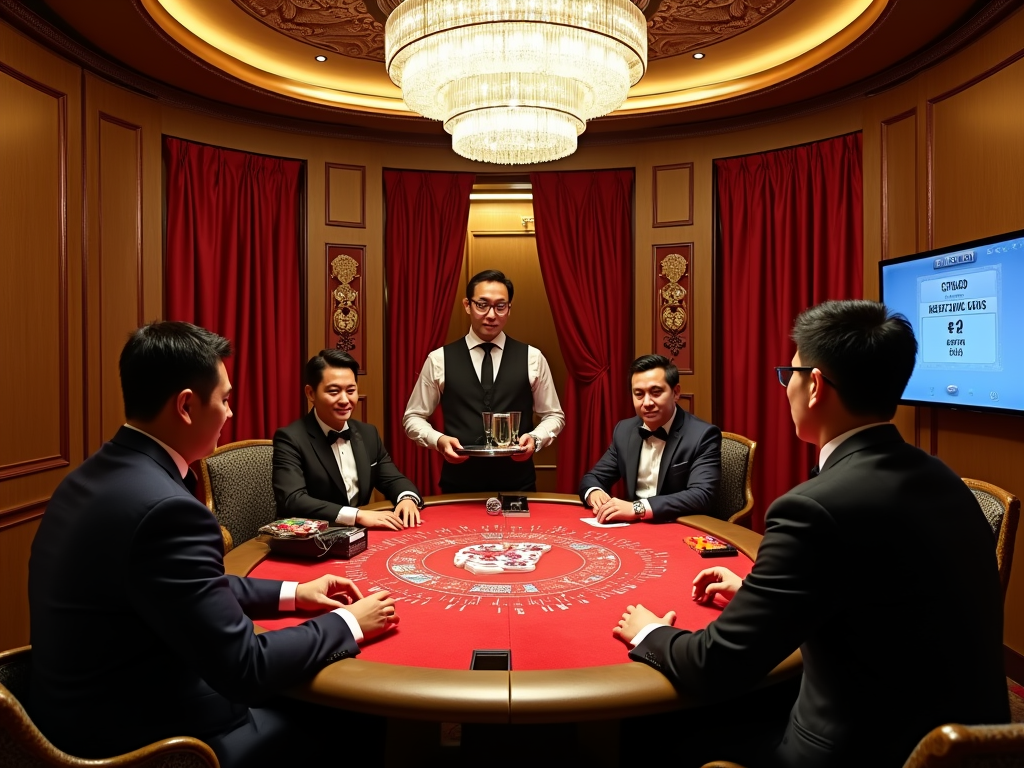
Sources:
Global Betting and Gaming Consultants
University of Nevada, Las Vegas – Center for Gaming Research
South China Morning Post / Financial Times / Reuters
Journal of Gambling Studies, Gaming Law Review and Economics
Casino-ology 2: New Strategies for Managing Casino Games by Bill Zender

